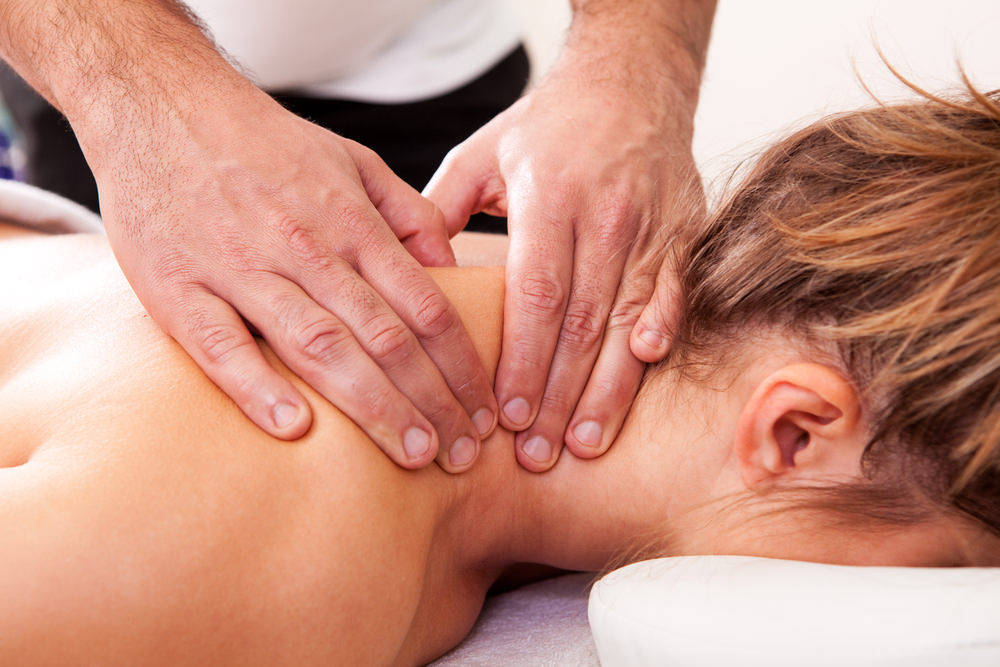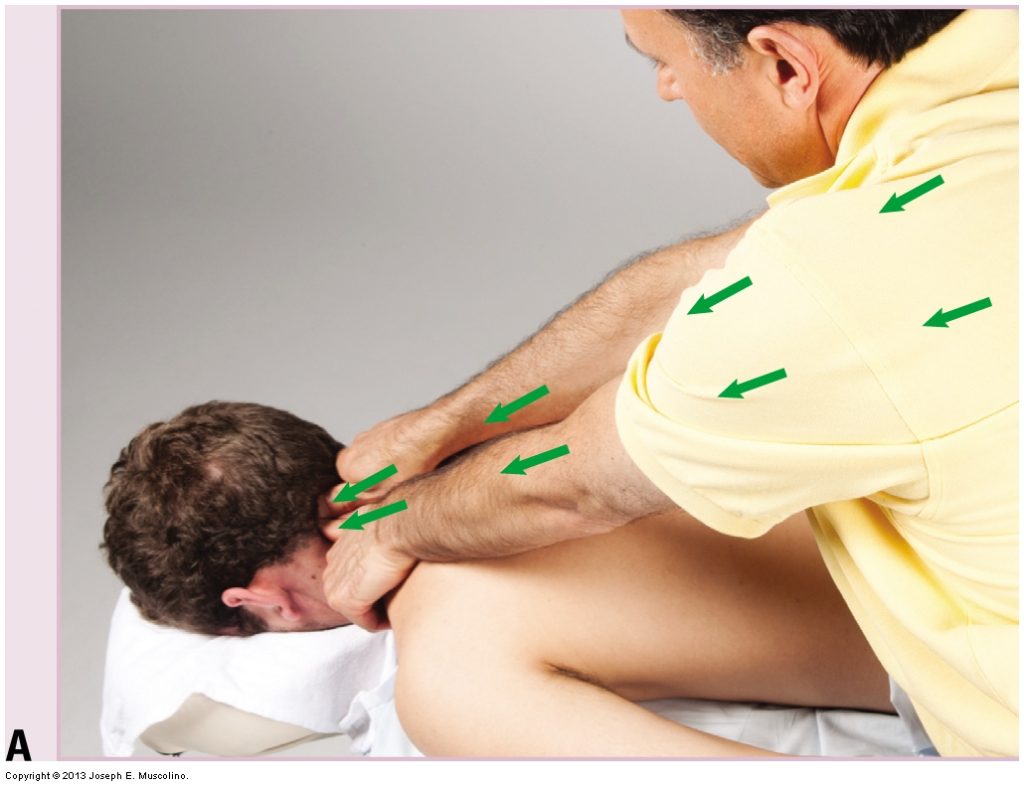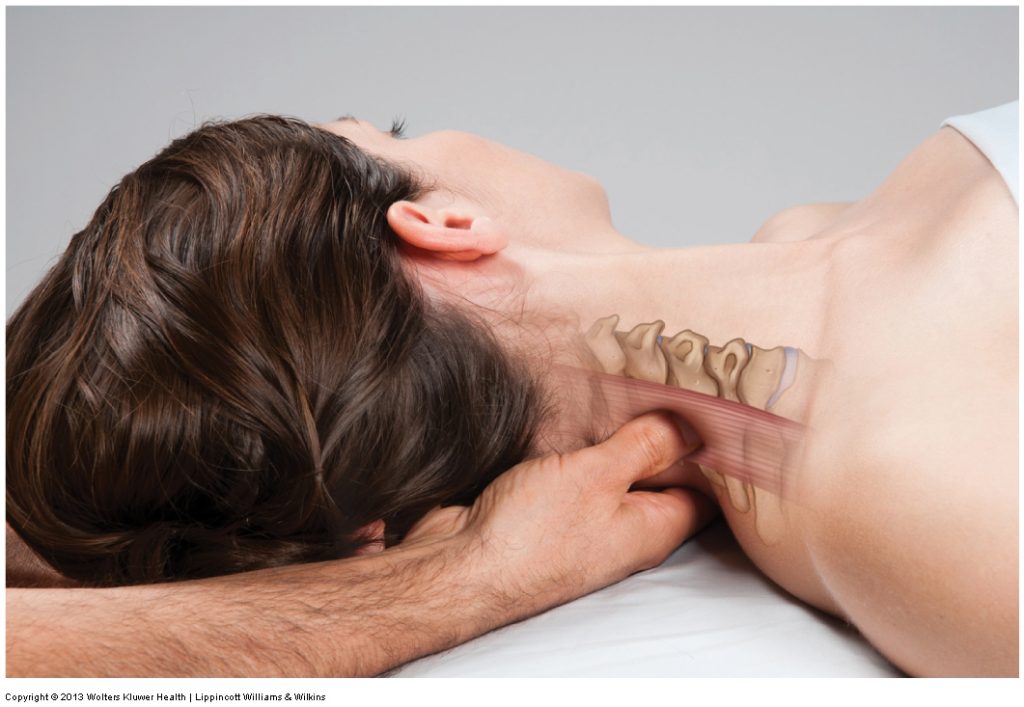Massage and Neck Pain
 Neck pain is a common condition, with prevalence of 30% to 50% of the population annually. While massage is commonly used for treating neck pain, there is no guideline for an optimal dose. The term “optimal dose” being defined by two factors:
Neck pain is a common condition, with prevalence of 30% to 50% of the population annually. While massage is commonly used for treating neck pain, there is no guideline for an optimal dose. The term “optimal dose” being defined by two factors:
- the optimal amount of time spent massaging the neck during each treatment
- the optimal frequency of massage treatments per week.
Researchers from Seattle tried to find an optimal dose of massage for treating neck pain. Two studies came out of their research.
Study – Finding the Right Dose
In the first study, J. Sherman, PhD, MPH, from the Group Health Research Institute in Seattle, and colleagues examined the optimal dose of massage for individuals with chronic nonspecific neck pain. The study was published in the March/April 2014 issue of the Annals of Family Medicine.
228 individuals with chronic nonspecific neck pain were recruited and randomized into five treatment groups. The control group received no massage at all. The individuals in each treatment group received a four-week course of either
- 30-minute treatments twice per week
- 30-minute treatments three times per week
- 60-minute treatments once per week
- 60-minute treatments twice per week
- 60-minute treatments three times per week
Primary outcomes were self-reported neck pain (0–10 scale) and self-reported neck-related dysfunction (on a scale of neck disability from 0–50 points). Neck pain and dysfunction were assessed at baseline and at five weeks after the beginning of the study.

Prone neck massage. Figure credit: Joseph Muscolino. Advanced Treatment Techniques for the Manual Therapist – Neck (2013, LWW).
Results
The researchers found that, regardless of the frequency of treatments, there was no significant benefit for 30-minute treatments when compared to the control group in terms of clinically meaningful improvement in neck pain or dysfunction. However, improvement in pain and dysfunction were significantly increased for 60-minute treatments two or three times per week.
Conclusion
The authors concluded that after four weeks of treatment, multiple 60-minute massages per week were more effective than fewer or shorter sessions for individuals with chronic neck pain.
Study – Booster Dose Added
Another study in Seattle was conducted by Andrea Cook, PhD and colleagues and was published in the October 2015 of The Spine Journal.
To achieve the aim, the authors set up a two-phase randomized trial that recruited participants with chronic nonspecific neck pain. The first phase of treatment was the same as in the previous study cited here (the Sherman, et al study). The individuals in each treatment group received a four-week course of either
- 30-minute treatments twice per week
- 30-minute treatments three times per week
- 60-minute treatments once per week
- 60-minute treatments twice per week
- 60-minute treatments three times per week
However, the second phase of treatment included a booster treatment, where participants received an additional six 60-minute massages, once per week; the control group for the second phase received no additional massage.
A total of 179 participants from Group Health and the general population of Seattle, WA, USA was recruited between June 2010 and August 2011.
Digital COMT
Did you know that Digital COMT (Digital Clinical Orthopedic Manual Therapy), Dr. Joe Muscolino’s continuing education video streaming subscription service for massage therapists (and all manual therapists and movement professionals), has at present (October of 2018) more than 1,000 video lessons on manual therapy continuing education, including entire folders on massage therapy, stretching, and joint mobilization. And we add seven (7) new videos lessons each and every week! And nothing ever goes away. There are also folders on Pathomechanics and Anatomy and Physiology, including an entire folder on Cadaver Anatomy… and many, many more on other manual and movement therapy assessment and treatment techniques? Click here for more information.
Results
Results showed that there were no observed differences by primary treatment groups at 12 weeks and at 26 weeks post the beginning of the study. However, those receiving the booster dose of six additional once per week 60-minute massages had improvements in both pain and dysfunction at 12 weeks; however, this improvement was found only in those individuals in the phase one 60-minute massage groups. Of further note, when the pain and dysfunction scales were examined at 26 weeks after the beginning of the study, these “booster improvements” became insignificant.
Conclusion
The authors concluded that “booster” doses for patients initially receiving 60 minutes of massage should be incorporated into future trials of massage for chronic neck pain.
Comment by Joseph Muscolino
I am not surprised to see that longer 60-minute massages are more effective than shorter 30-minute massages. More time allows for the area of pain and dysfunction to be more thoroughly treated. Nor am I surprised that a greater frequency of massage treatments per week was more effective than a lesser frequency. After all, in all other worlds of musculoskeletal rehabilitation, treatment frequency is usually two or three times per week, not once per week.
When a massage therapist tells me that they have a patient who is looking to have improvement from a musculoskeletal condition, and that the patient comes in “every” week, I often reply: You mean the patient only comes in “once” per week?

Supine neck massage. Figure credit: Joseph Muscolino. Advanced Treatment Techniques for the Manual Therapist – Neck (LWW, 2013).
Even though the gold standard of treatment in the world of massage is usually considered to be once per week, this is not the gold standard in all other musculoskeletal fields, such as physical therapy (physiotherapy), occupational therapy, chiropractic, exercise training, and sports coaching. I believe that the once-per-week frequency being considered to be the gold standard came from massage being considered to be a luxury treat for the client, not effective clinical orthopedic therapy aimed at remedying a specific musculoskeletal (neuro-myo-fascio-skeletal) injury.
The likely reason for the increased effectiveness of more frequent massage (and all musculoskeletal) treatment is that much of the underlying mechanics for musculoskeletal conditions is baseline tone muscle hypertonicity (tight, overly facilitated, locked-short or locked-long muscles). This control of muscle tone is often described as “muscle memory,” but in fact resides in the nervous system (gamma motor system controlling muscle spindle activity). And like all nervous system controls, chronic muscle tightness results in neural plasticity functional and structural changes in the nervous system cells (neurons and neuroglial cells). To change this neural plasticity pattern, the nervous system must be trained (re-trained) with more frequent treatments. Otherwise, any improvement gained in an initial session will be lost as the nervous system returns to its entrenched pattern. In effect, massage is not only a mechanical treatment aimed at the tissue contacted; it is also directed at the nervous system control of the muscle tone. In other words, much of the effectiveness of massage treatment lies in the re-programming of neural patterns of muscle tone.
This blog post article was created in collaboration with www.terrarosa.com.au.
(Click here for the blog post article: Tension Headaches.)
Digital COMT
Did you know that Digital COMT (Digital Clinical Orthopedic Manual Therapy), Dr. Joe Muscolino’s continuing education video streaming subscription service for massage therapists (and all manual therapists and movement professionals), has at present (October of 2018) more than 1,000 video lessons on manual therapy continuing education, including entire folders on massage therapy, stretching, and joint mobilization. And we add seven (7) new videos lessons each and every week! And nothing ever goes away. There are also folders on Pathomechanics and Anatomy and Physiology, including an entire folder on Cadaver Anatomy… and many, many more on other manual and movement therapy assessment and treatment techniques? Click here for more information.

